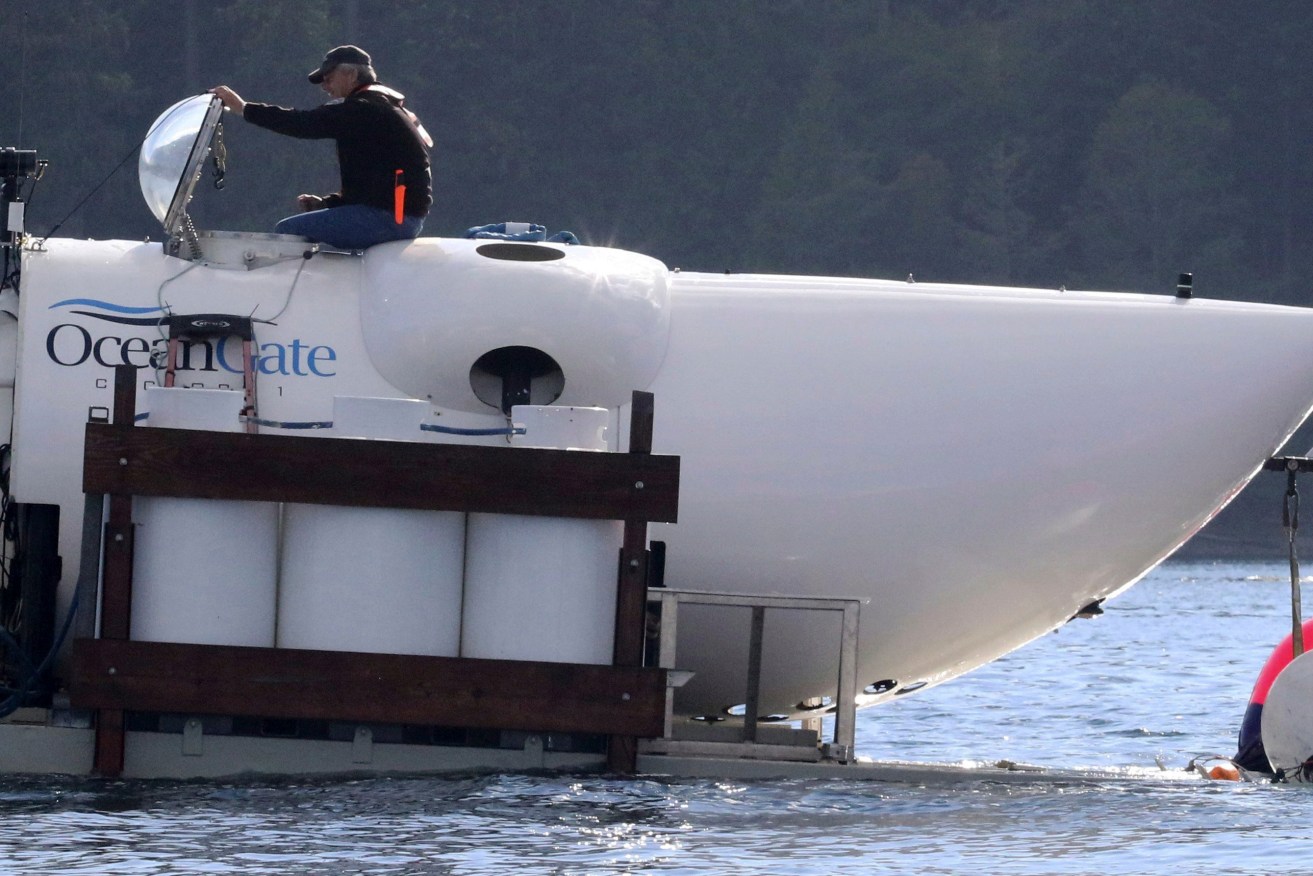Time and air running out for submersible rescue
Rescuers searching for a submersible with five people aboard which disappeared on a descent to the Titanic wreck say the vessel’s breathable air will run out on Thursday morning.

Oceangate CEO Stockton Rush aboard a sumbersible in 2018. He and five others are aboard a submersible missing in the Atlantic Ocean while on a descent to the Titanic wreck. Photo: Alan Berner/The Seattle Times via AP
The six-metre Titan submersible missing in deep Atlantic Ocean waters has the capacity to stay underwater for 96 hours, according to its specifications – giving the five people aboard until early on Thursday before air runs out.
One pilot and four passengers were inside the submersible early on Sunday when it lost communication with a ship on the surface about an hour and 45 minutes into its dive.
The Titanic site is about 1450km east of Cape Cod in the US and 644km south of St John’s, Newfoundland.
US and Canadian aircraft have searched about 7600 square miles, larger than the state of Connecticut.
The Canadian military has dropped sonar buoys to listen for any sounds that might be coming from the Titan, with no results thus far.
A commercial vessel with an unmanned vehicle capable of deep dives is also assisting, Frederick said.
Those aboard the submersible, the highlight of a tourist expedition that costs $US250,000 ($A370,000) per person, included British billionaire Hamish Harding, 58, and Pakistani-born businessman Shahzada Dawood, 48, with his 19-year-old son Suleman, both British citizens.
The 77-year-old French explorer Paul-Henri Nargeolet and Stockton Rush, founder and CEO of the vessel’s US-based operating company OceanGate, were also reported to be on board.
Authorities have not confirmed the identity of any passenger.
Rescuers face significant obstacles both in finding the Titan and in saving the people aboard, according to experts.
If the submersible experienced an emergency in mid-dive, the pilot would likely have released weights to float back to the surface, according to Alistair Greig, a professor of marine engineering at University College London.
But absent communication, locating a van-sized submersible in the vast Atlantic Ocean could prove challenging, he said.
The submersible is sealed with bolts from the outside, which means the occupants cannot escape without assistance even if it surfaces.
If the Titan is on the ocean floor, a rescue effort would be even more challenging due to the extreme conditions below the surface.
The Titanic lies 3810 metres underwater, where light does not penetrate.
Only specialised equipment can reach those depths without getting crushed by the massive water pressure.
“It’s really a bit like being an astronaut going into space,” said Tim Matlin, a Titanic expert.
“I think if it’s on the seabed, there are so few submarines that are capable of going that deep. And so, therefore, I think it was going to be almost impossible to effect a sub-to-sub rescue.”
OceanGate said it was “mobilising all options” to rescue those aboard the Titan.
US coast guard Rear Admiral John Mauger told NBC News the company is leading the search efforts with coast guard assets brought to the site.
“They know that site better than anybody else,” Mauger said.
“We’re working very closely with them to prioritise our underwater search efforts and get equipment there.”
OceanGate schedules five week-long “missions” to the Titanic each summer, according to its website.
David Pogue, a CBS reporter, dove to the site on board the Titan last year.
In a December news report, he read aloud the waiver he had to sign, which noted the submersible had “not been approved or certified by any regulatory body” and could result in death.
In an interview on Tuesday, Pogue said the OceanGate has successfully gone down to the wreck about two dozen times and that the company does a meticulous safety check before each attempt.
“They treat this thing like a space launch,” he said.
“It is definitely a culture of safety.”
-with AAP




